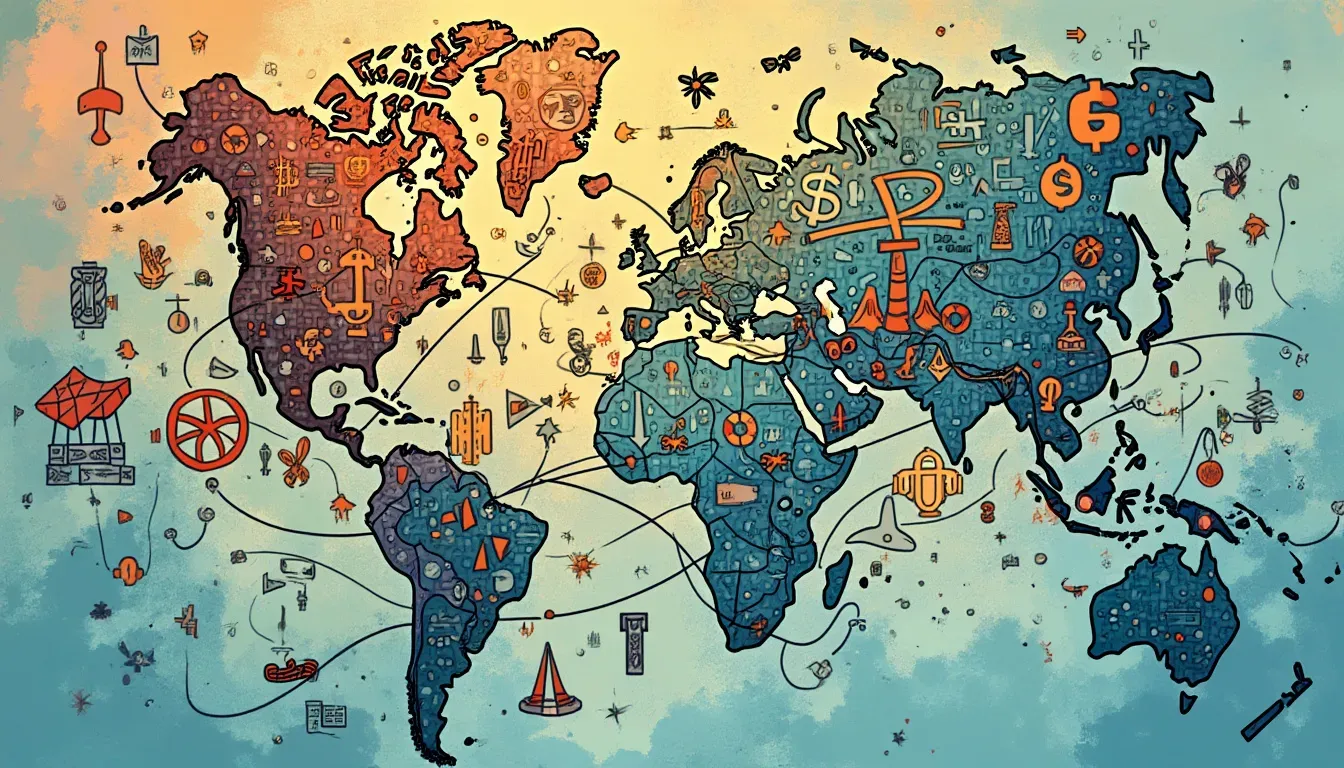Introduction
In the intricate tapestry of global economics, Stephen Mirren's "A User's Guide to Restructuring the Global Trading System", released in November, emerges as a beacon for understanding the multifaceted dynamics at play. Mirren's credentials as a senior strategist at Hudson Bay Capital and former advisor at the U.S. Treasury, coupled with a Ph.D. in economics from Harvard, lend significant weight to his insights.
"The complexity of global trade demands a nuanced approach, balancing strategic interests and economic realities." — Stephen Mirren
This analysis does not merely speculate; it intricately dissects the global trade and financial chessboard, devoid of any overt agenda, focusing on potential strategies and economic impacts, particularly in the context of a potential future Trump administration.
The Art of Tariffs
Tariffs became a household term during the trade tensions of 2018-2019 with China. Mirren aptly portrays tariffs as a tactical tool whose macroeconomic impact remains surprisingly modest, even counterintuitive.
Currency Offset and Inflation
- Currency Offset: Imagine imposing a 10% tariff on imports—if the exporting country's currency devalues by 10% against the dollar, prices for American consumers may remain stable. This concept challenges the assumption that tariffs directly correlate with inflationary pressures.
- Micro vs. Macro Perspectives: While macroeconomic data indicated stable inflation, detailed "price detective" studies found specific product prices did indeed rise, suggesting varied impacts at different levels of the economy.
Factors Influencing Tariff Impacts
- Delayed Currency Shifts: Importers might have pre-existing contracts at specific exchange rates, delaying the reflection of currency shifts in prices.
- Absorbed Costs: Some companies absorbed higher costs themselves to maintain consumer pricing, squeezing their profit margins.
- Re-Exporting Tactics: Significant rerouting of goods (e.g., "Made in China" products via Vietnam) circumvented direct tariff impacts.
Economic Impact
Despite a full tariff implementation on imports, Mirren suggests potential inflation increases in the U.S. might be as low as 1%, accounting for imports only constituting about 10% of total consumption.
"The narrative of tariffs leading to runaway inflation may be overstated; currency dynamics can significantly mitigate their impact."
Tariffs and Global Leverage
Mirren explores nuanced tariff strategies:
- Incremental Tariffs: A concept exploring gradual monthly tariff increases to pressure fulfillment of specific demands, such as addressing intellectual property concerns with China.
- Graduated Tariff Scales: Proposed by Scott Besson, involving various levels of tariffs depending on a country's trade policies, security cooperation, and alignment on global issues.
These strategies hint at leveraging trade policy as an expansive geopolitical tool, linking it to broader concerns like NATO defense spending and UN voting records.
Outlining Fiscal Devaluations
Mirren introduces fiscal devaluations—shaping competitiveness through trade, taxes, and subsidies rather than directly manipulating currency values—even integrating tariffs as part of this broader strategy.
Currency Manipulation: Coordinated vs. Unilateral Efforts
Currency policy represents a complex and risky domain, where aggressive U.S. devaluation efforts might trigger foreign sell-offs of dollar assets, impacting interest rates and inflation.
Coordinated Efforts
Historical attempts like the Plaza and Louvre Accords aimed at multilateral currency adjustments seem unlikely to replicate due to current economic conditions in Europe and China.
Potential "Mar-a-Lago Accord"
Mirren brings forth Zoltan Pozar's innovative idea—a radical integration of security alliances with financial commitments, where U.S. security beneficiaries might support the financial system by purchasing long-term U.S. treasuries, thus stabilizing interest rates.
Unilateral Tactics
- IEEPA and User Fees: Exploring the International Emergency Economic Powers Act to impose fees on foreign central banks' U.S. treasury holdings—a bold strategy reframing global economic relations.
- Direct Dollar Purchases: Mirren highlights the limitations of unilateral efforts through the Exchange Stabilization Fund, advocating careful balancing to avoid destabilizing inflation.
Implications for Markets and Volatility
Mirren postulates that a future Trump administration could ardently strive to reshape global trade while maintaining market stability.
- Sequenced Economic Policies: Possible initiation with tariffs to potentially strengthen the dollar, moving towards fostering a softer currency.
- Domestic Policy Buffer: Emphasizing deregulation, energy efficiency, and robust financial systems as buffers against trade-induced volatility.
"Navigating the tension between trade and currency adjustments requires astute policymaking, with significant implications for market dynamics."
Mirren underscores potential volatility stemming from both multilateral and unilateral currency measures, highlighting risks of higher treasury yields and market declines should unilateral actions proceed without Federal Reserve support.
Conclusions
Stephen Mirren's comprehensive guide illuminates the potential transformation of global trading and economic systems, offering insights into the strategic tools available to policymakers.
- Reflection on Trade and Currency Dynamics: Tariffs and currency policies, if deftly applied, offer opportunities and challenges, necessitating strategic implementation.
- Future of Global Finance: As nations grapple with these economic levers, the landscape of global finance might shift, emphasizing the importance of informed, adaptable strategies in policy and investment.
Understanding these dynamics offers pivotal insights, as the dance between trade, currency, and security complexities intensifies.
GLOBAL FINANCE, YOUTUBE, ECONOMIC STRATEGY, CURRENCY POLICY, GEOPOLITICAL TOOLS, TARIFFS, STEPHEN MIRREN, GLOBAL TRADE

